Where to go in Switzerland on a short trip: Alps, lakes, and cities
Switzerland is an extremely popular country for those planning multi-stop tours around Europe, yet very few potential first-time visitors actually know specifically where they want to go. Everyone seems to know that it has the most beautiful views of the Alps and some very impressive cities, but there are actually many misconceptions among casual trip planners, so I’d like to clear most of that up below. The places to visit in Switzerland are not obvious until you’ve been there yourself or done many hours of research, so the list below should be a short cut.
I get hundreds if not thousands of itinerary questions for people who are considering a Eurail trip around Europe, and most people just include the word “Switzerland” among a list of cities like Paris, Rome, and Berlin that they want to visit. So where in Switzerland should you go if you can only make a few stops at most? I’ll answer that question below. You’ll mostly want to focus on the best choices for Swiss Alps trips, which I’ll go over below.
Note: This article was expanded and updated in February, 2024.
Switzerland is about outdoor views rather than city visits
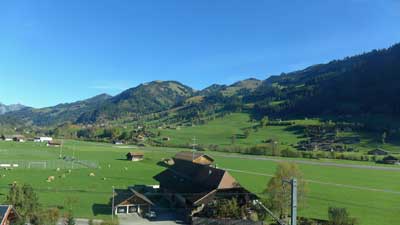
Geneva is a very famous city (though not for tourism reasons) on a lovely lake of the same name, but it’s also notoriously dull and lacking distinction. Rick Steves puts it well by saying that “Geneva is pleasantly situated on a lake, like Buffalo or Cleveland.” The point is, you don’t want to go to Geneva unless you’ve got something specific in mind that you want to see there. There are much better places to visit in Switzerland if your time is limited, or even if it’s not.
Switzerland's cities in summary
Zurich – The largest city, very expensive, geared towards business travelers. It’s generally a pretty and very well-run city that you would enjoy if you visited, but it’s not nearly as interesting as the likes of Vienna, Munich, or of course Paris.
Geneva – Second largest city, in the French part of the country, no major sights. Again, if you visited you’d be very impressed by it and get some great photos, but it’s not worth your time unless you know someone there. There’s an impressive fountain in the lake and you can usually see it from the train as you go through the city, but it’s not really worth going there and staying more than an hour or so.
Basel – Bordering France and Germany, no major sights. It has the famous art market each year, and aside from that it’s even duller than the ones above. Again, if you visited you’d be impressed, but if you later compared photos with friends who went to the Lauterbrunnen Valley instead, you’d kick yourself for going to Basel.
Lausanne – Near Geneva in the French part of the country, very hilly, and certainly more interesting than Geneva.
Bern – The capital, compact, on a lovely river, some interesting sights and the best Swiss city to get a feel for the culture. Bern is fairly close to Interlaken (which we will discuss below) and it can be a great day trip from there, especially on a day where it is foggy and/or rainy in the mountains (and this happens a LOT).
How much time and which Swiss cities to visit?
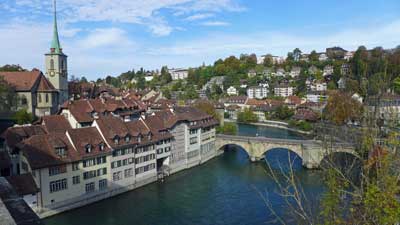
Many people (me included) don’t feel as if they’ve scratched the surface of a new country if they haven’t spent at least a day or two in the largest city. Zurich is certainly pleasant and a useful transit hub so spending one or two nights there wouldn’t be a major mistake. But Zurich isn’t even close to being a city like Paris, Rome, Berlin, Amsterdam, or even Vienna. If you skip it in favor of spending more time in the Swiss Alps, you won’t be missing much.
The 2 Best places to visit in Switzerland for short visits
Interlaken – If you want the best possible Alpine views and activities, head to the Interlaken area, which will be described in detail below. This is my favorite of all places to visit in Switzerland and it will probably be yours as well.
Lucerne – The traditional Swiss tourist retreat, Lucerne is a small city with interesting culture and sights, that is gorgeously set on a lake with plenty of top activities surrounding it.
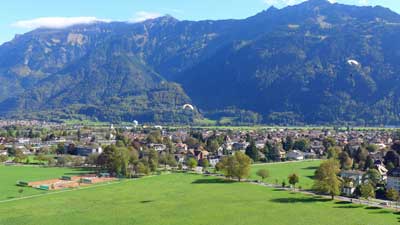
>>>Interlaken and Lucerne: Which to choose and how long to stay in each?
The article linked above will give you more details on which to choose and how long to spend in each place.
What about Zermatt for Alpine views?
Zermatt is a remote car-free village in southern Switzerland that is famous for being the place to see the Matterhorn mountain. It’s also a busy ski resort area, and aside from that, there isn’t much to see or do here. It’s on a private rail line, so it’s more complicated and usually more expensive to reach than Interlaken.
In other words, unless you’ve irrationally placed “Seeing the Matterhorn in person” on your so-called bucket list, skip Zermatt and head to Interlaken on a shorter visit. You won’t be sorry. If you already have enough time in your visit for the main sights around Interlaken and Lucerne and you want to also see the Matterhorn, then by all means go and you’ll enjoy it. There are quite a few other car-free villages in the Lauterbrunnen Valley near Interlaken, so they are not as novel in Switzerland as one might expect.
A weekend in Switzerland? What to see in 3 days
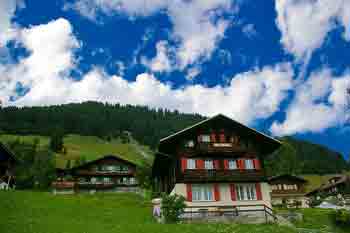
One challenge is that neither has an international airport so you’ll either be flying into Zurich or perhaps Geneva.
Train times from Zurich to Lucerne to Interlaken and back
- Zurich Airport to Lucerne: 1 hour 10 minutes by train
- Lucerne to Interlaken: 2 hours by train
- Interlaken to Zurich Airport: 2 hours 15 minutes by train
As you can see with the travel times above, Zurich Airport to Lucerne is a fairly short trip, but once you add Interlaken into the mix (even if you skip Lucerne) the travel time starts to add up for a weekend visit. With this in mind it’s probably best to just choose one of them and save the other one for another trip.
Lucerne is gorgeous, but the Lauterbrunnen Valley near Interlaken is really the star of the show, so I’d recommend going there first and doing Lucerne on another trip.
What about the Swiss Travel Pass?

The bottom line is that if you are coming to Switzerland for at least 3 days and you want to take 2 or more of the amazing scenic rail journeys that the country is famous for, the travel pass is probably a good deal. It also provides 50% discounts on the Schilthorn cable car and 25% off the Jungfraujoch mountain railway. Both of those are quite expensive on their own, but extremely worthwhile, so the discount is helpful.
The Half Fare Card is probably a better deal for most people
The Swiss Travel Pass is a good deal for those who are going to be spending at least 2 or 3 days riding the rails and seeing Switzerland that way. But if you are mostly going to be focusing on Interlaken and Lucerne and the mountain sights, the Half Fare Card is the best option. For CHF120 (about US$134) you get the card that is good for 30 days and gives you a 50% discount on all trains, cable cars, mountain railways, and other sights and attractions. If you are doing either Schilthorn or Jungfraujoch, the Half Fare Card practically pays for itself with just one of those.
>>>Buy the Swiss Half Fare Card
Many people have questions about the Swiss Half Fare Card so I will explain it a bit here. You can actually buy half price train tickets for travel within Switzerland any time you want and you will see that option when you go to buy them online. The only thing is you have to have and present a valid Half Fare Card when you get on the train and are asked to see your ticket. In other words, you can buy a half fare train ticket today and buy a Half Fare Card just before you get on that train months in the future, and you are fine.
How and why visit the area around Interlaken
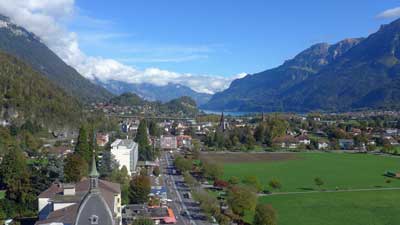
You can see everything discussed below by actually staying in a hotel in Interlaken, but it’s not the Alpine experience that you get if you stay in one of the small villages nearby. You can reach those villages in 20 to 40 minutes from the Interlaken Ost (East) train station, and it’s much easier than it sounds.
The 3 best places to stay to visit the Swiss Alps
Lauterbrunnen – A private train line runs from Interlaken Ost station to the end of its line in Lauterbrunnen. There’s a lovely waterfall here and great hiking trails, but you should probably only stay here if you can’t get to one of the villages mentioned just below. It’s a great little transit hub and it’s definitely gorgeous, so it can be worth a night if you’ve got one to spare.
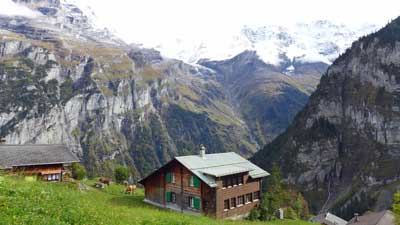
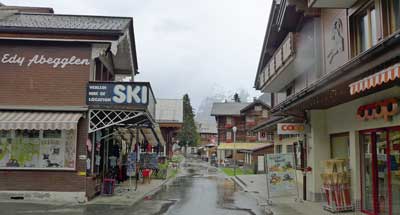
Where to stay in Interlaken and the Lauterbrunnen Valley (with pics)
I get so many questions about where to stay in the Interlaken area that I decided to write a longer version of it and load it with huge photos so readers can get a better feel for each option. I also included recommendations for affordable and well-located photos in each area.
>>>Where to stay in Interlaken and the Lauterbrunnen Valley New for 2024!
The unforgettable things to see here (if the weather is decent)
Schilthorn observation deck and restaurant
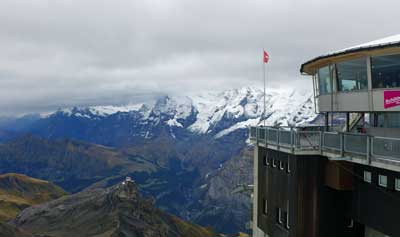
There is a rotating restaurant (with prices similar to normal Swiss restaurants) and a bizarre and anachronistic James Bond attraction based on it being a key location in the 1969 movie On Her Majesty’s Secret Service. The Bond thing is included with the lift, and it’s worth a look.
But the main thing you come here for is the 360-degree view from one of the highest peaks in Europe. Again, the weather here is key, but fortunately all the locals track the visibility on a minute-by-minute basis. If it’s clear up top while you are in the area, it would be a terrible shame to skip it based on the high price. But even if it’s cloudy up top, there are still plenty of wonderful things to see and do in the villages below.
Jungfraujoch observation area
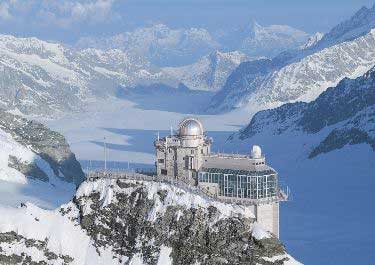
The views from the top are similar to the views from Schilthorn, from the other side of the Lauterbrunnen Valley. Once on top you can have lunch, hike, or even go sledding. It’s also quite expensive at nearly US$200 round-trip unless you have a Swiss Pass or a Eurail Pass for discounts, and it takes most of your day, but you’ll never forget the views from the top.
Harder Kulm mountain and Two Lakes Bridge Observation Deck
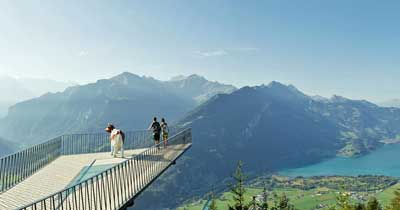
There’s a revolving restaurant about 10 minutes’ walk from the station at the top, which is definitely an unforgettable place for lunch if you’ve got time. It’s not as expensive as you might expect, at least compared to normal restaurants in Switzerland.
The Harder Kulm Railway goes from early April through late November each year. If you are only in Interlaken for one day and/or you are on a strict budget, this is the fastest and best way to get amazing Alpine views in the area.
Getting from Interlaken to Gimmelwald and Mürren
Getting up to these villages sounds complicated and time consuming, but it’s actually fast and easy once you get there. This little guide should help.
Arrive in Interlaken
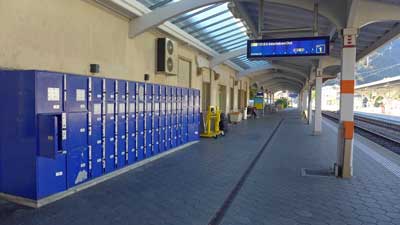
Once you arrive at the Interlaken Ost train station, head for the ticket windows in the office and buy a ticket to your final destination (Lauterbrunnen, Gimmelwald, or Mürren). Eurail passes are good for 25% discounts on the rest of the trip, but not for the whole thing.
From Interlaken Ost to Lauterbrunnen
The private train leaves Interlaken Ost every 30 minutes and arrives in Lauterbrunnen 20 minutes later. If you are staying in Lauterbrunnen then you are probably walking distance from your hotel when you reach the station.
From Lauterbrunnen to Gimmelwald
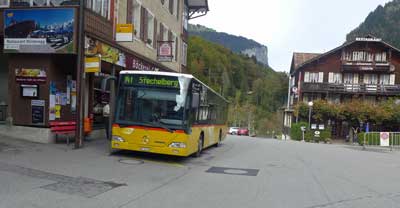

From
Gimmelwald to Mürren
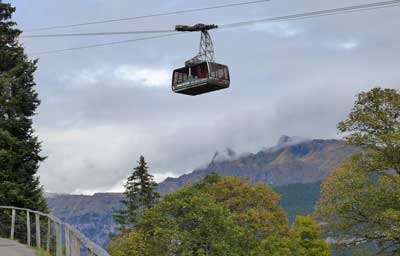
Recommended hotel and hostel in Gimmelwald
I get asked all the time about where to stay in Gimmelwald, so here it is:
Hotel: Esther’s Guesthouse
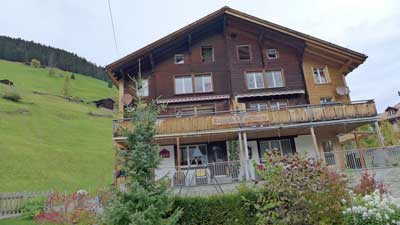
It’s run by Esther, as you might guess, and she is very friendly speaking excellent English. Each room is different and the place feels like a mountain cabin, because it is. She offers an excellent buffet breakfast in the morning, which you have to order the night before. It’s not cheap, but it’s worth it because it’s hearty and there are no other good options nearby.
Book as early as possible because this place is often the first place to sell out in Gimmelwald.
Hostel: Mountain Hostel Gimmelwald
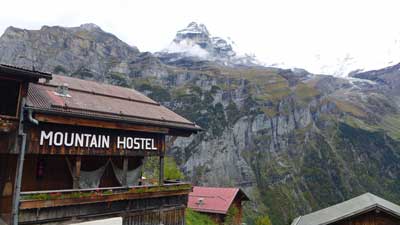
You won’t believe the views from this place, which are the same as from Esther’s except a bit lower and more unobstructed. This place also has a busy bar and restaurant that is basically the only “nightlife” in Gimmelwald. Many hikers get to bed early in this tiny village, but if you want to have a couple drinks and order a pizza or some local options, this is the place to go.
Again, book early because this place is always sold out.
Lucerne and what to do there
Luzern, as it’s spelled locally, is the other traditional holiday destination in Switzerland. Unlike Interlaken, Lucerne actually qualifies as a small city rather than a small resort town, so it’s a very nice contrast and very worthwhile. We have a new article with advice on where to stay in Lucerne and it should be helpful.
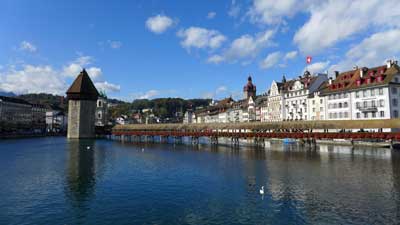
However, unlike Interlaken, the town of Lucerne itself is a great attraction and worth at least a day of exploration. This has always been a rich area so you can expect to find all of the high-end shops and boutiques along the small streets just north of the lake, but there are also many traditional shops and things to see that will appeal to anyone.
Recommended hotel in Lucerne
>>Hotel Des Alpes (3 stars with an amazing location and view)

If this place is booked, which is often the case, then book a hotel as close to it as you can find or afford. The whole historic part of town surrounding it is lovely, with restaurants, bars, and high-end shops. There are also a couple of nearby supermarkets where you can buy inexpensive alcohol and picnic supplies to keep other costs down.
Spend a day in Lucerne itself
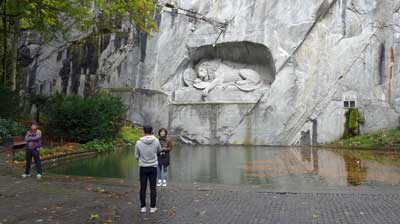
Most of the interesting part of Lucerne is in the area behind those restaurants, and it’s certainly worth doing a self-guided walking tour if not a guided one. Heading farther east you’ll come to another older part of town where the famous lion statue is located. You can’t visit Lucerne without having a look at the lion, and fortunately it’s easy and quick to reach (and it’s free).
Take a lake cruise of some kind
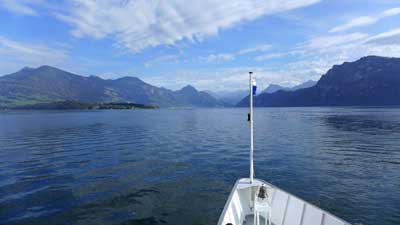
Especially in nice weather, even the short lake tour is lovely, and if you have more time you can jump off at Vitznau and do the scenic hike up Mount Rigi. There are also small lakeside villages that are ideal for a stroll and lunch stop. Long story short, there are dozens of interesting sightseeing options that are available using part of the boat tour, and the views all around are wonderful.
Visit Mount Pilatus
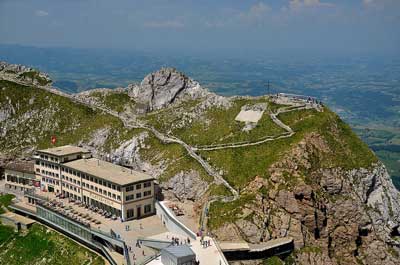
You can take the cogwheel train up and have a more or less flat hike around the summit area, and then take the gondola and cable car back down again. You can do them in the other order, and the cost is the same either way. At around US$65, this is not a cheap hike, but like most everything in Switzerland, the quality is high so it doesn’t feel like a rip-off. You can reach the cable car in 10 minutes on a public trolly bus from Lucerne.
Visit Mount Rigi
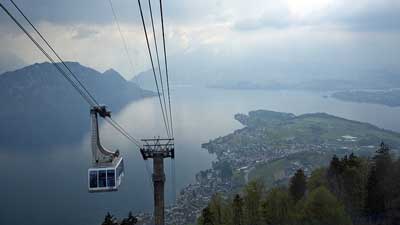
Unlike the other peaks mentioned in this article the Swiss Travel Pass covers both ways to get up and down for free. The others are 50% off with the Swiss Travel Pass or Half Fare Card, except for Jungfraujoch, which is only 25% off with the Swiss Travel Pass and still 50% off with the Half Fare Card.
Visit Mount Titlis
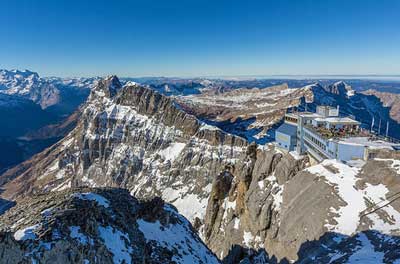
You can reach Titlis by taking a 43-minute train ride from Lucerne to Engelburg and then taking the cable car up from there. As with the others, it’s wise to check the weather immediately before you are going to depart because it can be foggy or cloudy any time of the year, but usually not for whole days at a time.
Additional photo credits
Jungfraujoch by cupweuro on Flickr, Pilatus by Tony Fernandez on Flickr, Rigi by Kosala Bandara on Flickr, Titlis by PaulSchliebs on Flickr

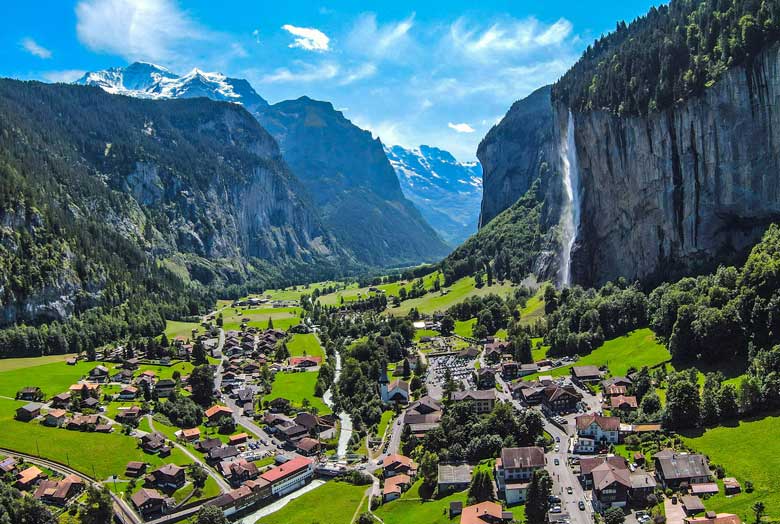
Hello Roger,
First of all, let me echo the sentiments of many others here that yours is an extremely informative and helpful website and one of the most up-to-date I’ve found on the Internet. The level of reader engagement you are maintaining is phenomenal. I do a fair amount of (online) research and planning for a trip, and whereas I’ve had to look at many sources for places I’ve visited in the past, I have hardly looked at anything else beyond your articles for Switzerland. So hats off to you and thank you very much!
One question I haven’t been able to find a satisfactory answer to is about carrying luggage on one of the boat cruises, particularly on the Thunersee. Our group will have 2 suitcases (check-in luggage size), a strolley bag (cabin size) and a couple of backpacks. After doing the Interlaken area, we plan to head on to Bern and would like do a part of that journey on the water, from Interlaken-West to Thun (See). The train station at Thun is right next to the ferry terminal and it would be very easy to then take a train from Thun to Bern. The websites for the cruises do not talk about luggage; at least, I was not able to find something about it. The only thing I could find was a 2011 post on TripAdvisor, which said that luggage was OK. But I would like to be sure whether or not lugging the bags along on the boat will be an issue.
Is this something you have an idea about? Thanks in advance!
Regards,
Rahul
Rahul,
Thank you for the kind words. That sort of thing makes this even more worthwhile. I’m not sure about the answer to your question, but my educated guess is that luggage would be just fine. Many of those boats are used for local transportation by residents, so you often see huge bags or even things like TVs on them. And the boats that I’ve taken in that area tend to be very large and rarely very full.
Since the Interlaken to Thun boat is basically a ferry that stops off at other towns on the way, I’m 99% sure normal luggage would be fine. If these were motorboats with, say, 50 seats and that’s it, there might be a problem. But these lake boats are much larger than that and have indoor seating and outdoor seating so you should be fine. Best of luck with this. -Roger
Roger,
First of all, let me just say how amazing and kind it is of you to diligently answer our questions! Ive planned many vacations, and I can’t believe I’m JUST now finding your blog! BRAVO! Anyway so per your recommendation, I looked into staying in Lauterbrunnen and Murren, and I’m in love!! I’m wondering though, will it be a little cold and rainy in August? And if we get a car or a taxi, are they easy to reach from Bern airport? And have you heard of a small town called Weggis? I found a great chalet there, but the owner said it’s a small town so not a lot to do. I would love to be near a walkable town, it’s just so much easier to be near things when you have two little ones in tow! Anyway thanks so much again!! Looking forward to your reply 🙂
Maggie,
I’m so glad you found this site as well. August can be a bit rainy in Switzerland, especially close to the Alps, but the storms rarely last more than half a day or so at a time. And August is obviously one of the warmer months of the year, so it’s one of the best times to go.
Bern Airport is small and I haven’t been there, but I’m sure there are taxis and rental cars there, and it’s only about 50 kilometers from Interlaken. I’d highly recommend taking trains if you can though. Children travel free on Swiss trains with a paying adult if you get a free Swiss Family Pass. Taxis would be extremely expensive (like most things in Switzerland), although it would be faster. The scenery from trains tends to be better than scenery from roads as well. If you buy a Half Fare Card it would probably pay for itself quickly.
When you take the 2-hour lake cruise in Lucerne, Weggis is the first or second stop. I didn’t get off there, but I agree that it is a small town for sure. It’s a tough call, but it might be too inconvenient to stay there. I’m sure there is a little supermarket and a few restaurants, but nearby Lucerne has everything and it’s also very walkable. As long as you stay reasonably close to the train station, Lucerne is very compact and it’s easy to walk everywhere. Let me know if you have any other questions. -Roger
Roger, thank you so much for this informative guide! We have a 3 day layover in Switzerland in August, but we cant decide where to stay! We’ll have 2 small kids with us, is it advisable to fly to Bern ad then explore around there/stay n Interlaken? How far is Interlaken from Bern?
Maggie,
Interlaken is only 60 kilometers (42 miles) from Bern and trains between them take a bit under an hour. I’d stay near one of the train stations in Interlaken if I were you. Bern is a lovely and photogenic city, but if you visit Switzerland you really want to focus on the scenic beauty, and that is most on display in the Interlaken area. Let me know if you have any other questions. -Roger
Roger,
Thank you for the very helpful and informative article. My wife and I want to spend a week in Switzerland after having gone on a cruise of the Rhine with my mother, sister and brother-in-law. They will return home with my mom so we will continue on with just the two of us. Based on your article and comments, it appears our best opportunity to experience the country would be to spend time in Bern, Interlaken, and Lucerne. We arrive in Basel early on August 9th and will proceed from there. Do you recommend that we rent a car or take trains or other public transportation to get around? If trains then which pass would be best to buy? Also is there is a particular order you suggest we visit those areas or other areas you think we should add? Finally, we plan to leave on August 16th and can depart from either Zurich or Geneva. Based on your other comments, I presume a brief visit to and departure from Zurich would be the better alternative?
Thanks for all the help!
Tim,
I’ll answer your questions in order. I’d take trains if you have a choice. They aren’t cheap, but neither is renting a car, and trains are much less stressful. The Half Fare Card for around US$120 per person for 30 days is the best bet for most trips like this. I discuss it and the full passes on my article about the Swiss Travel Pass. It really doesn’t matter which order you visit these places, but keep in mind that summer is the rainy season in the Alps, although the storms tend to come and go within a few hours in most cases. So if you want to go to the top of Schilthorn or Jungfraujoch, you might want to time it for a part of a day when you know it’s going to be clear up top. Conversely, you can enjoy the Lucerne lake cruise even if it’s sprinkling a bit, although there is less rain there than up in the mountains. Also, when it’s raining in the Alps it’s probably clear in Bern, so if you decide where you go based on the weather you should be able to see everything.
The obvious downside to planning as you go is that the better hotels will usually be sold out if you wait until a day or two before. In that case I’d go to Interlaken first, and if you get unlucky and it’s raining while you are there, you’ll still have a chance to do something on a clear day later in your trip.
Zurich is a more interesting city than Geneva, and both are very expensive. If you want to spend a few hours in one then Zurich is the better choice. But if you can get a better or cheaper flight out of Geneva, that could be good too. Have a great trip. -Roger
Hi Roger,
I contacted you earlier with the original plan of landing in Zurich and making our way to Interlaken and spend time in Murren and Gimmewald. The plans changed a bit. We are landing in Milan to start. The same day we land we are thinking in taking a train to Lucerne from Milan via an Italian Rail Co. My new question to you is: How late do the Cable cars run from Interlaken to Murren?
Our game plan is land in Milan at 10am. After Customs estimate noon. Take a train to Lucern. Arrive in Lucerne around 3:30pm. Check into our hotel and spend what ever is left from the day in Lucerne. the next morning get more of Lucerne in till the afternoon. When we take the last train up to Interlaken and than a cable car to Murren. Where we will spend three nights to take in the sights. (Gimmelwald was sold out for the days we are staying) 🙁 Is this a good game plan?
Would you recommend I buy tickets ahead of time from Milan to Lucerne? and from Lucerne to Interlaken? I think you said its ok to buy the Lucerne to Interlaken same day. Cant remember. :/
Or would you recommend we visit Spies instead of Lucerne?
Thanks for the help.
Michelle,
It looks like most of this is the same as the question I just answered for Jessica, but I’ll address the new parts. The trains from Interlaken to the cable cars up to Murren run until around midnight each night. They are used as local transportation for residents as well as the many tourists. Buy your international train tickets as early as possible for the lowest fares. The domestic trains and cable cars in Switzerland are only available 30 days out, and they are the same price no matter when you buy them so you can buy them once you get there. Lucerne is far more interesting than Spiez for a first-time visitor, although Spiez is quite nice as well. Let me know if you have any other questions. -Roger
Roger,
Hello! What a terrific article.
I am planning in visiting Switzerland in September.
We land in Milan and plan to make our way up to Switzerland from there.
Will be planning to stay three nights in Murren, since Gimmewald is sold out for the days we are planning to travel.
Can you please recommend the best way to get to Murren from Milan?
I saw the ItaliaRail offers a train from Milan to Lucerne…than I am thinking I would take a Swiss train to the Interlaken area, and than a cable car to Murren. Does this sound feasible?
I arrive into Milan at 3pm..was thinking in taking a train straight to Lucerne. Enjoy Lucerne for the evening, stay a night…enjoy the city during the day into afternoon. Than travel to the Alps (Interlaken) in the evening. Can you tell me if that will be wise and available to travel in the evening to Interlaken to get a cable car to Murren to check in? Average cost I could see going from Lucerne to Murren?
Thank you in advance.
Jessica,
Thank you for the kind words. The fastest way from Milan to Murren is to take a train from Milan to Spiez, Switzerland, and then change trains for the short ride to Interlaken Ost. That whole journey takes 3 hours and 5 minutes from Milan to Interlaken. After that you follow the instructions in the article above. The short version is you’ll take a train from Interlaken Ost to Lauterbrunnen and then a short bus ride to the cable car station in Stechelberg, followed by a 5-minute cable car ride to Gimmelwald and then walk across the platform for another 5-minute ride up to Murren.
If you want to go from Milan to Lucerne, the train takes 3 hours and 16 minutes and you have to change in Arth-Goldau or Lugano for a slightly slower one. Spending your first evening and the following morning in Lucerne sounds like a great idea. It’s a lovely place and the standard lake cruise takes only 2 hours, leaving from just in front of the train station. The journey from Lucerne to the bottom of the mountain below Murren is CHF45 (US$46). The cable car to Murren will add another CHF10 or so each time you take it. If you are considering doing Schilthorn, which is at the top of that series of cable cars, and you really should consider it, you might consider buying a Half Fare Card. The Half Fare Card costs CHF120 for 30 days and then it saves you 50% on pretty much every transport method in Switzerland. Let me know if you have any other questions. -Roger
Roger,
Great article! I have learned a lot and it is a great help for me preparing our upcoming trip.
We are 2 adult couples (very fit and capable) and will be coming to Switzerland for Stresa on Lago Magiore in Italy for a few days. As per your suggestions we would like to see both Lucerne and the Alpine Villages, Murren and Gimmelwald. We are in a car, and will be continuing after to Austria.
I am thinking of either:
1. Staying in Lucerne and making a day trip to the villages or
2. Staying liek 2 nights at Murren if we can leave our car safely somewhere at Lauterbrunner or
3. Staying in Lauterbrunner and going to the villages for a day.
What would you suggest?
Thanks
Rost,
I’d definitely spend at least one night in the Interlaken area, and hopefully more than one. There is a car park at the Stechelberg Cable Car station, and Gimmelwald is one stop up from there, and Murren is the next stop. Here are the parking rates at that station. It seems pretty reasonable to me, considering where it is and how wonderful the ride up the mountain to a car-free village is. You might even find a hotel in Lauterbrunnen that has free parking, and you can take the bus to the cable car station. Have a great trip. -Roger
Hi Roger, thank you for your article.
I will be visiting Switzerland for 6 days.
I’m not really keen on the busy city center I would prefer scenic nature instead.
I plan to go to Interlaken and Lucerne, and finally fly out from Zurich.
What i want is to go through the scenic route and stop by and sit back to enjoy the view, and take photos.
Do you think driving is ideal for my kind of interest? Or train?
Any recommendation? Or advise? Thanks in advance!
Ling,
If you lived in a nearby country and already had a car, I’m sure you could do a great driving tour of Switzerland. But since you are flying in, I’d definitely do it by train. There are definitely some stops on the highways with areas where you can pull over and take photos, but I think it’s much nicer and easier on the trains. In fact, there are many places in the mountains and valleys where the trains go but there are no roads. The opposite is also true, of course. Still, almost every train ride in Switzerland is a scenic train ride.
Just going from Zurich to Interlaken to Lucerne and back to Zurich you’ll see excellent scenery. When you are in Interlaken you can do Schilthorn and/or Jungfraujoch, and when you are in Lucerne you can do Rigi and/or Pilatus, and there are no cars up on top of those peaks. Since you have 6 days you might also take the Golden Pass west of Interlaken through the valley to Montreux. That section through that valley is simply stunning. But again, if you just do the trains to the places you have in mind and also do at least a couple of the main peak attractions that I mentioned, you will fill all of your memory cards with amazing photos. Let me know if you have any other questions. -Roger
Hi Roger,
My partner and I will be visiting Switzerland for about 3 days. We will be flying from Amsterdam. What do you think we should do? We both love the outdoors and would love to see the beautiful mountains. Will one there about January 5th. Is this a good time?
Thanks!
Kelsi
Kelsi,
The ski season in Switzerland usually starts in the middle of December, but you can still hike and see the main sights in the Alps as well as on Lake Lucerne. Usually you get snow well up in the mountains, but usually not on the valley floors most of the time. The whole article above is about what to do in a short trip like this. Interlaken is the best hub for a short visit. Lucerne might not be quite as nice in the winter since it’ll be cold on the lake cruise boats, but it’s still very nice.
If you can do either Schilthorn or Jungfraujoch while you are in the Interlaken area (as long as the weather is clear when you are going), you’ll never forget it. Let me know if you have any other questions. -Roger
Hi Roger, On the first day I will reach Basel airport around 11am, and would like to travel to lucerne directly, is there any scenic train you would recommend? p.s. I bought swiss pass. Thank you, cheers.
Aaron,
It looks like you’ll need to take a bus from the Basel Airport into Basel, where you’ll get off at the Basel SBB main train station. Don’t get off at Basel Bad BF, which is the part of that train station that is actually in Germany, although even if you do it’s not a big deal. From Basel SBB train station there are direct trains going to Lucerne leaving at 4 minutes and 17 minutes after every hour. The one at 4 minutes after takes 1 hour and 1 minute, while the one at 17 minutes after takes 1 hour 13 minutes. Your Swiss Travel Pass will cover any of those trains. Have a great trip. -Roger